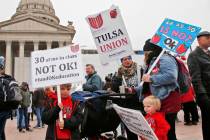‘Gettysburg’ battle history
Don’t know much about history? It’s our story and a lot of it is more interesting than anything dreamed up by a novelist.
Civil War historian Stephen W. Sears breathes life into a conflict that tore this country apart more than 140 years ago. Reading his recounting of one of the Civil War’s pivotal battles, one can almost smell the cannon smoke, the blood slopping on the ground in the surgery tents, and the fear as soldiers waited to fight and probably die.
Sears is a former editor of American Heritage and has written six books about the war, including Chancellorsville and Landscape Turned Red. Gettysburg was published in 2003 by Houghton Mifflin Company.
In the early summer of 1863, Vicksburg, Miss., was about to fall to Northern forces. Confederate commander Gen. Robert E. Lee needed a victory, not to save Vickburg — it was all but too late for that — but to deal the Union a hard blow. He decided to march north and force a fight. On July 1-3, 1863, Lee’s army collided with Union troops commanded by Gen. George Meade on the quiet farmland around Gettysburg, Pa. Civilians who couldn’t flee took cover in farmhouses and cellars as fields and orchards turned into places of carnage — and heroism. Before Lee’s army was defeated, the two sides lost more than 50,000 men, 9,600 of them dead.
The battlefield is now the Gettysburg National Military Park. A new museum and visitors center opened April 14.
Sears writes a gripping history of the battle. It also is a reminder that throughout our history people with the same hopes and aspirations, love of family and plans for the future as we have put all of it aside for a cause they believed was worth dying for.
In the interest of full disclosure, my great-grandfather, his brothers and father enlisted as Union soldiers. My great-great-grandfather never returned from the war. He was captured and held at the Confederate prison at Andersonville, Ga. In that hellhole, where some 13,000 Union prisoners died of malnutrition, exposure and disease, he lost his health. He died after war’s end in a U.S. military hospital.










